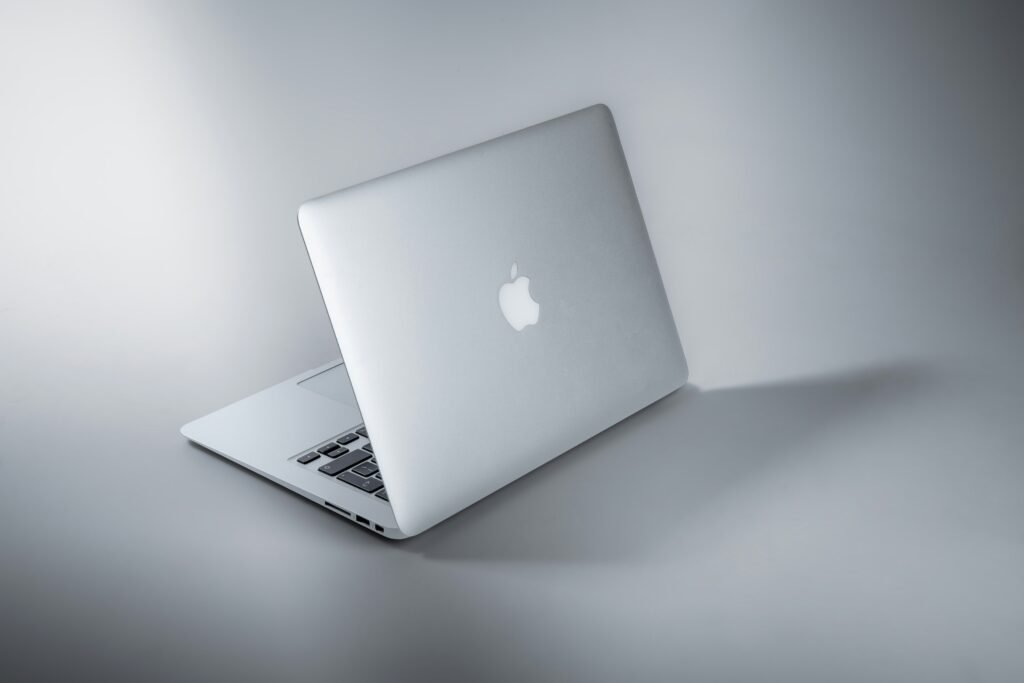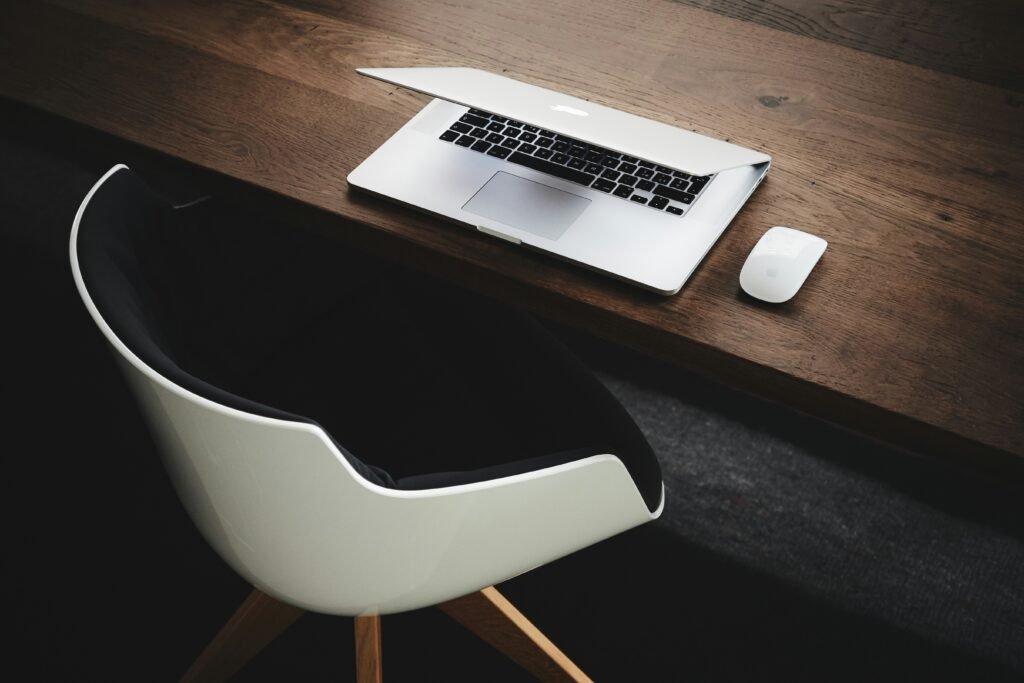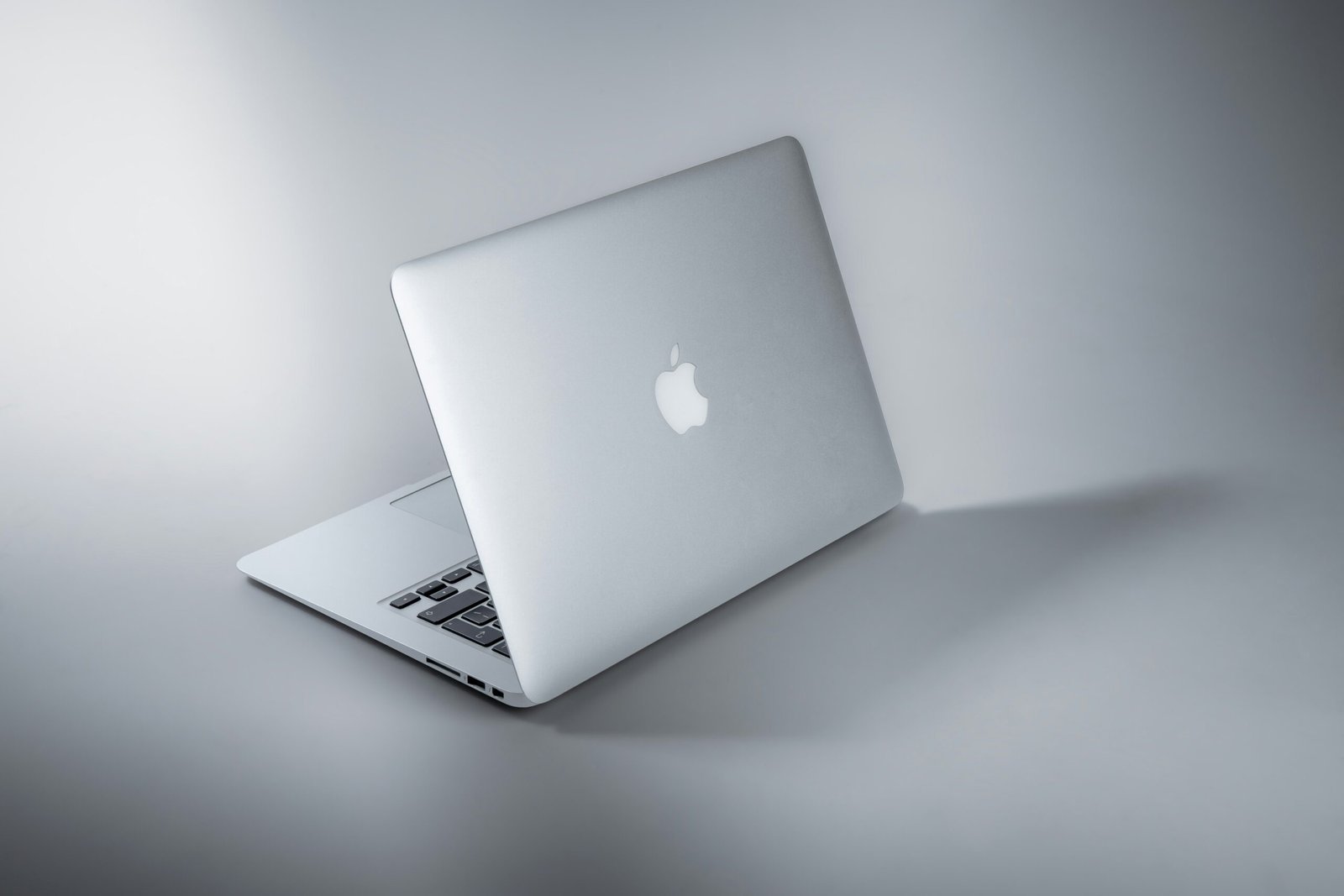In the world of laptops, the battle between MacBook and Windows laptops has been raging for years. Both have their own dedicated fan bases and unique features that make them stand out. Whether you’re a die-hard Apple enthusiast or a loyal Windows user, it’s important to understand the key differences between the two operating systems. From design and performance to software compatibility and price, this article will provide an in-depth comparison of MacBook and Windows laptops, helping you make an informed decision on which one is right for you. So, grab a cup of coffee, sit back, and let’s dive into the world of MacBook and Windows laptops.
Price
MacBook prices
MacBooks are known for their premium quality and sleek design, but they come with a higher price tag compared to Windows laptops. The price of a MacBook can vary depending on the model and specifications you choose. The latest MacBook Pro models with advanced features and faster processors tend to be more expensive. On average, a MacBook can range from $1,000 for the entry-level MacBook Air to around $2,500 for a fully loaded MacBook Pro.
Windows laptop prices
On the other hand, Windows laptops offer a wider range of options when it comes to price. You can find Windows laptops in various price ranges, starting from budget-friendly options around $300 to high-end models that can exceed $3,000. The price of a Windows laptop depends on factors like brand, specifications, design, and additional features. With Windows laptops, you have the flexibility to choose a device that fits your budget and requirements.
Factors affecting price
Both MacBook and Windows laptops have different factors that influence their prices. For MacBook, the premium build quality, innovative features, and exclusive software contribute to the higher price range. Apple’s strict control over its hardware and software ecosystem adds value to the overall product. On the other hand, with Windows laptops, the price can be influenced by the brand reputation, hardware specifications, design, and customization options available. Additionally, the competition among various manufacturers leads to a wider range of pricing options.
Operating System
MacBook operating system
MacBook comes with Apple’s macOS operating system, which offers a user-friendly and intuitive interface. macOS is designed to seamlessly integrate with Apple’s hardware, providing a smooth and optimized performance. The operating system also offers a range of exclusive features, such as Siri, iCloud, and the ability to sync with other Apple devices. With frequent updates and security patches, macOS ensures a stable and secure computing experience.
Windows laptop operating system
Windows laptops run on the Windows operating system, which is developed by Microsoft. Windows offers a diverse range of options, with the latest version being Windows 10. The operating system provides a familiar interface and caters to a wide range of users. It supports a vast library of software applications and is compatible with various hardware configurations. With regular updates and improvements, Windows ensures a stable and productive computing environment for its users.
User experience comparison
When it comes to user experience, it ultimately depends on personal preference. MacBook’s macOS offers a seamless integration with Apple’s ecosystem, providing a cohesive experience if you already own other Apple devices. The optimized performance and exclusive software features enhance productivity and ease of use. On the other hand, Windows operating system offers a familiar interface and extensive compatibility with third-party software and hardware devices. The flexibility and customization options of Windows allow users to tailor their experience to their specific needs. Ultimately, the choice between macOS and Windows depends on individual preferences and priorities.

This image is property of images.unsplash.com.
Hardware
Processor
Both MacBook and Windows laptops come equipped with various processors, each offering different performance levels. MacBooks typically use Intel processors, ranging from dual-core models in the MacBook Air to higher-performance quad-core models in the MacBook Pro. These processors are designed to optimize power efficiency while delivering a seamless user experience. Windows laptops, on the other hand, offer a wide range of processors from various manufacturers such as Intel, AMD, and Qualcomm. The choice of processor on a Windows laptop depends on the brand, model, and performance requirements.
RAM
The RAM (Random Access Memory) of a laptop contributes to its overall performance and multitasking capabilities. MacBooks generally come with a standard RAM capacity ranging from 8GB to 16GB, ensuring smooth performance for everyday tasks. Windows laptops, on the other hand, offer a wider range of RAM options. From budget-friendly laptops with 4GB of RAM to high-end models with 32GB or more, Windows laptops provide flexibility for users with varying requirements. The choice of RAM capacity depends on the intended use of the laptop, such as basic browsing, multitasking, or demanding applications.
Storage capacity
MacBooks and Windows laptops offer various storage options, including solid-state drives (SSD) and hard disk drives (HDD). MacBooks usually come with SSDs, offering faster read and write speeds, improved durability, and increased energy efficiency. The storage capacity of a MacBook can range from 128GB to 2TB, depending on the model. Windows laptops, on the other hand, provide a wider range of storage options, including both SSDs and HDDs. The storage capacity of a Windows laptop varies based on brand, model, and budget, ranging from as low as 64GB to several terabytes.
Graphics
Graphics performance is essential for tasks such as video editing, gaming, and graphic-intensive applications. MacBooks are equipped with integrated Intel graphics processors, suitable for everyday tasks and light gaming. However, for users who require more powerful graphics capabilities, select MacBook Pro models offer dedicated graphics cards from AMD. Windows laptops provide a wider variety of options when it comes to graphics. From integrated graphics to high-performance dedicated graphics cards from NVIDIA and AMD, Windows laptops cater to users with specific graphic-intensive needs.
Build quality
One of the distinguishing factors of MacBook is its exceptional build quality. MacBooks are renowned for their premium materials, precision engineering, and attention to detail. The unibody aluminum design not only gives them a premium look but also enhances durability. Windows laptops, on the other hand, come in a wide range of build qualities depending on the brand and model. While there are budget-friendly options with plastic casings, high-end Windows laptops can also feature premium materials like aluminum or carbon fiber, offering a balance between design, durability, and cost.
Software Compatibility
MacBook software compatibility
MacBooks are specifically designed to run macOS, which means they have limited software compatibility compared to Windows laptops. However, macOS supports a wide range of professional software and applications commonly used in fields such as graphic design, video editing, and music production. Additionally, macOS also offers a vast selection of applications through the Mac App Store. Users can also run Windows applications on their MacBooks through virtualization software or by using tools like Boot Camp, which allows the installation of Windows alongside macOS.
Windows laptop software compatibility
Windows laptops have the advantage of wide-ranging software compatibility due to the popularity of the Windows operating system. The vast majority of software and applications are developed specifically for Windows, making it easier to find and use the required software. From productivity tools to gaming applications, users can easily find suitable software for their needs. Additionally, Windows laptops offer compatibility with legacy software and older versions of programs, which can be crucial for certain industries or specific workflows.
Availability of applications
While Windows laptops enjoy a wider range of software compatibility, MacBooks have a curated selection of applications that are designed specifically for macOS. Apple’s strict control over the Mac App Store ensures that users can find verified and reliable applications tailored for their MacBook. The curated selection provides a level of quality assurance and reduces the risk of downloading malware or untrusted software. However, it is worth noting that Windows laptops have a larger software library due to their market dominance, offering a wider selection of both professional and consumer-oriented applications.

This image is property of images.unsplash.com.
Customization
MacBook customization options
MacBooks offer limited customization options compared to Windows laptops. Apple’s philosophy is to provide a seamless and optimized user experience by controlling both the hardware and software aspects. While users can choose between different MacBook models with varying specifications, these options are usually predetermined by Apple. However, users can personalize their MacBook by customizing the desktop background, dock settings, and various system preferences. Additionally, there is an extensive range of accessories available to enhance the MacBook experience, such as external monitors, keyboards, and mice.
Windows laptop customization options
Windows laptops offer a higher degree of customization compared to MacBooks. Whether it’s choosing different brands, models, specifications, or design elements, Windows laptops provide a wide range of options to meet individual preferences. Users can customize various aspects of their Windows laptop, including the desktop background, theme, system settings, and more. Additionally, Windows laptops allow for hardware upgrades and customization, such as adding more RAM, storage, or even replacing components like the battery or keyboard.
Personalization features
Windows laptops excel in the area of personalization features, offering a wide range of options to make the device feel unique to each user. The ability to change and customize themes, wallpapers, icons, and window layouts allows users to create a personalized computing environment. Windows laptops also offer compatibility with third-party software and tools that provide additional personalization options, such as customizing the taskbar, start menu, and even the overall user interface. The extensive customization options make Windows laptops a popular choice for users who value personalized aesthetics and preferences.
Gaming Performance
MacBook gaming performance
While MacBooks are not primarily designed for gaming, they can still provide a decent gaming experience. MacBooks with dedicated graphics cards, such as the MacBook Pro models, can handle moderate gaming and handle popular titles with lower graphics requirements. However, MacBooks are not suitable for high-end gaming or graphic-intensive games due to the limitations of their integrated graphics processors. The gaming performance on a MacBook is further limited by the availability of compatible games on macOS, as many games are developed primarily for Windows.
Windows laptop gaming performance
Windows laptops are known for their gaming capabilities. With a wide range of options, including laptops with powerful dedicated graphics cards, Windows laptops offer superior gaming performance compared to MacBooks. Windows laptops can handle graphically demanding games with ease, delivering high frame rates and smooth gameplay. The availability of a vast library of games and the optimization of games specifically for the Windows operating system further enhances the gaming experience on Windows laptops. From casual gaming to professional eSports, Windows laptops provide a wider range of options for gamers.
Graphic-intensive games
When it comes to playing graphic-intensive games, Windows laptops have a clear advantage over MacBooks. Windows laptops offer a wider range of hardware configurations, including models with high-performance dedicated graphics cards from NVIDIA or AMD. These dedicated graphics cards provide the necessary power and performance to handle graphically demanding games with higher resolution and detail settings. While some MacBooks may have dedicated graphics cards, their availability and performance are limited compared to the vast options available for Windows laptops.

This image is property of images.unsplash.com.
Battery Life
MacBook battery life
MacBooks are known for their impressive battery life, offering all-day usability without the need for frequent charging. The combination of efficient hardware components, optimized software, and power management features contributes to their long battery life. Depending on the model and usage, MacBooks can provide anywhere from 8 to 12 hours or more of battery life on a single charge. This makes MacBooks ideal for users who require a portable device that can last through a full day of work, travel, or leisure activities without the need for constant access to a power source.
Windows laptop battery life
Windows laptops vary in terms of battery life, depending on factors such as hardware configuration, power management settings, and usage patterns. While some Windows laptops offer comparable battery life to MacBooks, others may have shorter battery life due to less efficient hardware components or power-hungry features. On average, Windows laptops can provide anywhere from 5 to 10 hours of battery life, with some high-end models offering even longer battery life. It is essential to consider the specific brand and model of a Windows laptop to determine its battery life performance accurately.
Power optimization
Both MacBooks and Windows laptops offer power optimization features to extend battery life. MacBooks, with their tightly integrated hardware and software, ensure efficient power usage by optimizing resource allocation and intelligently managing background processes. macOS includes power-saving features such as App Nap and Power Nap, which minimize the energy consumption of idle applications and allow background processes to operate with minimal impact on battery life. Windows laptops also offer power management features, allowing users to customize power plans, adjust screen brightness, and manage background processes to optimize battery life, although the level of optimization may vary depending on the laptop’s specific hardware and software implementation.
Support and Service
MacBook support and service
Apple provides excellent support and service for its MacBook lineup. The company offers a comprehensive warranty coverage for its devices, typically lasting for a year from the date of purchase. Additionally, Apple provides options to extend the warranty coverage through AppleCare+ plans, which offer additional benefits such as priority access to support, coverage for accidental damage, and discounted repair costs. Apple’s customer support is known for its responsiveness and expertise, offering assistance through various channels such as phone, chat, and in-person visits to Apple Stores.
Windows laptop support and service
Windows laptops are supported by a diverse range of manufacturers, each with its own support and service offerings. The warranty coverage and support options can vary depending on the brand and model of the laptop. Some manufacturers offer standard warranties that cover hardware defects for a limited period, while others provide extended warranty options for additional coverage. Support for Windows laptops is typically available through various channels, including phone, email, online support portals, and authorized service centers. The level of support and service can depend on the individual manufacturer’s reputation and commitment to customer satisfaction.
Warranty and repair options
When it comes to warranty and repair options, Apple’s MacBook lineup offers a level of consistency and comprehensiveness. The standard warranty covers hardware defects for a year and includes access to Apple’s renowned customer support. Apple also provides additional warranty options, such as AppleCare+, which extends coverage and includes benefits like accidental damage protection. Repair services for MacBooks are available through Apple Stores, authorized service providers, and mail-in service options. Windows laptops, on the other hand, can have varying warranty periods based on the manufacturer and model. Repair options for Windows laptops are usually provided by the manufacturer’s authorized service centers or third-party repair services.
Portability
MacBook portability
MacBooks are known for their excellent portability, making them popular choices for users who require a lightweight and compact device. The combination of slim designs, lightweight materials, and efficient hardware allows MacBooks to be easily carried and used on the go. MacBook Air models are particularly lightweight and thin, weighing as little as 2.8 pounds. MacBook Pro models, while slightly heavier due to their additional features and performance capabilities, are still highly portable, with weights ranging from 3 to 4 pounds. The compact size and lightweight nature of MacBooks make them convenient for commuting, travel, and working in various environments.
Windows laptop portability
Windows laptops come in various sizes and form factors, providing options for users with different portability needs. Windows laptops can range from ultraportable models, similar to MacBooks in terms of size and weight, to larger and heavier laptops designed for high performance and gameplay. The portability of a Windows laptop depends on its specific model and design. While some Windows laptops may match the portability of MacBooks, others may be larger and more cumbersome to carry. Users looking for highly portable Windows laptops can choose from ultrabook models designed for maximum portability and lightweight construction.
Weight and size comparison
MacBooks are known for their slim and lightweight designs. The MacBook Air is one of the thinnest and lightest laptops available, with a weight ranging from 2.8 pounds and a thickness of just 0.63 inches. The MacBook Pro models, while slightly heavier due to their additional features, still offer a high level of portability with weights ranging from 3 to 4 pounds and thicknesses between 0.59 and 0.64 inches. Windows laptops, on the other hand, come in various sizes, weights, and thicknesses. Depending on the specific model, a Windows laptop can range from as light as 2.2 pounds to over 5 pounds, with thicknesses varying from under half an inch to over an inch. It is essential to consider personal preferences and needs when comparing the weight and size of MacBooks and Windows laptops.
Security
MacBook security features
MacBooks are known for their robust security features, providing a secure computing environment for users. macOS offers built-in security measures such as Gatekeeper, which verifies the integrity and origin of downloaded applications, protecting against malware and unauthorized software. Additionally, MacBooks benefit from Apple’s closed hardware and software ecosystem, making it more difficult for potential security threats to penetrate the system. Apple’s frequent software updates and security patches ensure that MacBooks remain protected against the latest vulnerabilities. Overall, MacBooks offer a strong foundation for securing personal data and providing a safe computing experience.
Windows laptop security features
Windows laptops also offer a range of security features to protect against potential threats. Windows 10, the latest version of the operating system, includes various built-in security measures such as Windows Defender antivirus software, which provides real-time protection against malware and viruses. Additionally, Windows laptops benefit from third-party security software and tools developed specifically for the Windows platform. Microsoft regularly releases security updates and patches to address vulnerabilities, ensuring the security of Windows laptops. Users can further enhance the security of their Windows laptops by implementing additional security measures such as strong passwords, two-factor authentication, and encryption.
Malware and virus protection
Both MacBooks and Windows laptops provide protection against malware and viruses, although the level of security may differ. MacBooks benefit from Apple’s stringent control over their hardware and software ecosystem, which helps in reducing the exposure to malware and viruses. However, it is not immune to security threats, and macOS can still be targeted by specific types of malware. Windows laptops, on the other hand, have historically been more susceptible to malware and viruses due to their larger market share. However, Microsoft’s continuous efforts in improving the security of the Windows operating system have minimized the risks significantly. By regularly updating their software and using reputable antivirus software, users can mitigate the risks and ensure a safe computing experience on both MacBooks and Windows laptops.
In conclusion, both MacBook and Windows laptops offer unique features and benefits catering to different user preferences and requirements. MacBooks excel in terms of build quality, optimized performance, and seamless integration with Apple’s ecosystem. They provide a secure and user-friendly experience, albeit at a higher price point. On the other hand, Windows laptops offer a wider range of options in terms of pricing, customization, and software compatibility. They are specifically designed to cater to a diverse range of users and provide extensive hardware and software flexibility. Ultimately, the choice between a MacBook and a Windows laptop depends on factors such as budget, specific needs, preferred operating system, and personal preferences.
